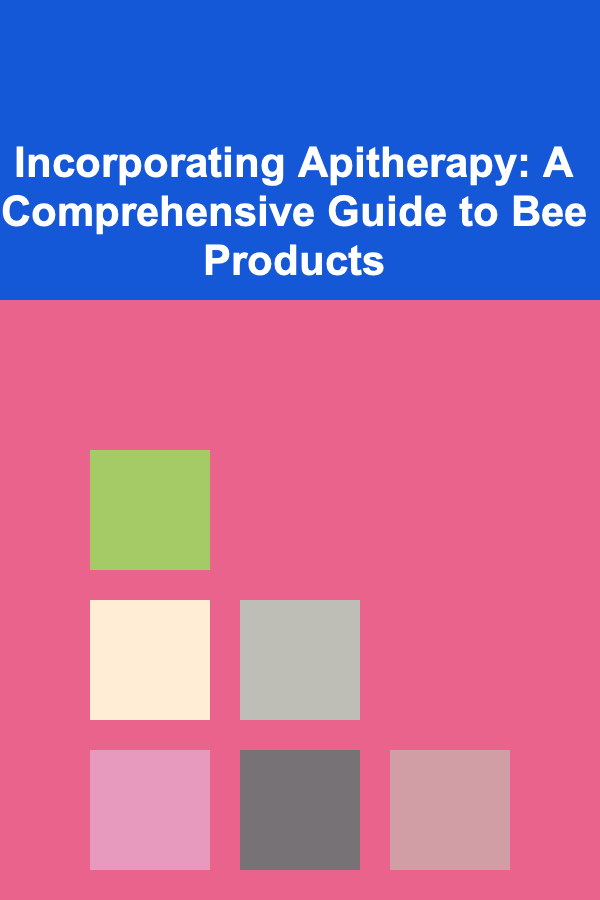
How to Use a Budgeting App to Track Alcohol and Tobacco Costs
ebook include PDF & Audio bundle (Micro Guide)
$12.99$7.99
Limited Time Offer! Order within the next:
Not available at this time

Managing personal finances effectively often involves tracking various spending habits, including those related to lifestyle choices. For many people, alcohol and tobacco are part of their daily or occasional routines, but these purchases can add up significantly over time. If you're looking to gain better control over your spending and make more informed decisions about your finances, using a budgeting app to track alcohol and tobacco costs is a great place to start.
In this article, we'll explore why it's important to track these expenses, how to use a budgeting app effectively, and offer strategies to reduce spending on alcohol and tobacco for a healthier financial future.
Why Track Alcohol and Tobacco Expenses?
Tracking your alcohol and tobacco expenses might seem like a small detail in the broader scope of personal finance, but it can have significant long-term effects on both your health and your wallet. Here's why tracking these costs is important:
1. Financial Awareness and Control
Tracking alcohol and tobacco spending helps you become more aware of how much you're spending in these areas. It might be surprising to see how much money is going toward these habits, especially if it's spread out over several smaller purchases each day or week. With a clear picture of your spending, you're in a better position to make conscious choices about whether you want to continue at your current level of expenditure.
2. Identifying Trends
Budgets can often reveal spending patterns that you may not notice otherwise. Perhaps you tend to drink more on weekends, or you purchase tobacco products in larger quantities at certain times of the month. Identifying these trends can help you plan ahead and make adjustments to your budget, helping you achieve financial goals.
3. Cutting Unnecessary Expenses
Alcohol and tobacco can be significant contributors to unnecessary or discretionary spending. By tracking these costs, you can decide whether these habits align with your overall financial goals. For some, reducing alcohol or tobacco consumption can lead to substantial savings that can be redirected toward more beneficial goals, such as saving for retirement, paying down debt, or investing in a health savings account.
4. Improved Health and Financial Well-being
There's an undeniable link between alcohol and tobacco consumption and a variety of health issues. By monitoring your spending and consciously choosing to reduce or eliminate these habits, you not only improve your health but also reduce long-term medical costs. Moreover, cutting back on alcohol and tobacco can free up money for healthier activities or for putting toward savings.
Benefits of Using a Budgeting App
A budgeting app offers a simple and effective way to track your expenses, especially when it comes to things like alcohol and tobacco. These apps can automatically categorize your spending, provide insights into your habits, and give you the tools to make adjustments. Here are the main benefits of using a budgeting app:
1. Automation and Ease of Use
Most modern budgeting apps are easy to use and can automatically track and categorize your spending. By linking your bank accounts or credit cards to the app, your purchases are logged in real-time, allowing you to see exactly how much you're spending on alcohol, tobacco, and other categories. This automated process saves you time compared to manually logging each purchase.
2. Customizable Categories
Budgeting apps allow you to create custom categories for specific expenses, such as alcohol and tobacco. By doing so, you can easily track how much you spend on these items each month. Some apps even let you set spending limits for these categories, helping you stay within your budget.
3. Real-Time Tracking and Notifications
One of the major advantages of using a budgeting app is the ability to monitor your spending in real-time. Many apps send notifications when you approach or exceed your budget in certain categories, giving you the opportunity to adjust your spending behavior before it gets out of hand.
4. Visualization of Spending
Most budgeting apps provide visualizations of your spending habits, such as graphs or charts. This makes it easier to spot trends and patterns in your spending. Seeing your alcohol and tobacco expenses visually may serve as a wake-up call and help you make more mindful decisions going forward.
5. Goal Setting and Progress Tracking
In addition to tracking expenses, many budgeting apps allow you to set financial goals, such as saving a specific amount of money each month. If your goal is to cut back on alcohol or tobacco spending, you can track your progress and celebrate milestones when you successfully reduce your spending.
How to Use a Budgeting App to Track Alcohol and Tobacco Costs
Using a budgeting app to track alcohol and tobacco costs is a simple and effective process. Here's a step-by-step guide to help you get started:
1. Choose the Right Budgeting App
The first step is to select a budgeting app that fits your needs. Some popular options include:
- Mint: Mint is a user-friendly app that automatically categorizes your expenses, including alcohol and tobacco, and provides insights into your spending. You can create custom categories and set spending goals.
- YNAB (You Need a Budget): YNAB is ideal for people who want to take a hands-on approach to budgeting. It encourages users to allocate funds for specific goals and tracks progress toward those goals.
- PocketGuard: PocketGuard is a simple budgeting app that helps you track your spending and find areas where you can cut back, such as on alcohol or tobacco purchases.
- GoodBudget: This is a great app for people who prefer a more traditional envelope-style budgeting method, where you assign a certain amount of money to specific categories like alcohol and tobacco.
2. Link Your Accounts or Manually Enter Purchases
Once you've chosen your app, link your bank accounts, credit cards, or payment apps to automatically track purchases. If you prefer not to link your accounts, you can manually input your alcohol and tobacco purchases into the app.
3. Create Custom Categories for Alcohol and Tobacco
Most budgeting apps allow you to create custom spending categories. Set up categories for both alcohol and tobacco, so you can specifically track how much you're spending on each. You can even create subcategories for different types of alcohol (beer, wine, spirits) or tobacco products (cigarettes, cigars, smokeless tobacco) if you want a more detailed breakdown.
4. Set Spending Limits
After categorizing your alcohol and tobacco expenses, set a monthly spending limit for each category. This helps you stay on track and avoid overspending. For example, if you currently spend $200 per month on alcohol, try setting a budget of $150 for the next month to see if you can cut back.
5. Track and Review Your Spending
As you make purchases, keep an eye on your alcohol and tobacco expenses through the app. Many apps will automatically update your spending, while others may require you to log each purchase manually. Regularly review your spending to see if you're sticking to your limits or if you need to adjust your habits.
6. Monitor Trends and Make Adjustments
Use the insights provided by your app to identify trends in your alcohol and tobacco consumption. Perhaps you notice that you spend more on weekends or during stressful times of the month. Understanding these patterns can help you adjust your habits, whether it's cutting back on weekend drinks or finding healthier alternatives.
7. Set Goals to Reduce Spending
If you're trying to cut back on alcohol or tobacco consumption, use the app to set realistic goals. For example, you might aim to reduce your alcohol spending by 10% each month or cut out tobacco products entirely. Track your progress and celebrate small victories along the way.
Strategies to Reduce Alcohol and Tobacco Spending
Tracking your alcohol and tobacco expenses is a great first step, but for many people, the ultimate goal is to reduce these expenses. Here are some strategies that can help you cut back on your spending:
1. Limit Frequency of Purchases
Reducing the frequency of alcohol and tobacco purchases can have a significant impact on your overall spending. For example, if you usually buy alcohol every weekend, try limiting your purchases to every other weekend or setting a budget for a specific number of drinks per week.
2. Seek Alternatives
Consider finding cheaper alternatives or healthier options. You could switch to less expensive brands or explore non-alcoholic drinks if you're trying to cut back on alcohol. Similarly, nicotine alternatives like vaping or nicotine patches may help reduce tobacco costs.
3. Set a Cash-Only Budget
Using cash for alcohol and tobacco purchases can help you stick to a budget. Once you run out of cash for the month, you'll be more likely to stop purchasing these items, forcing you to reconsider your habits.
4. Track Spending by Day
Sometimes, tracking alcohol and tobacco spending on a daily basis can help you spot unnecessary purchases. Consider setting up your app to break down expenses by day or week, so you can easily spot when you're overspending.
5. Focus on Long-Term Savings
Reducing alcohol and tobacco consumption doesn't just save you money in the short term. Over time, these savings can add up and help you achieve more significant financial goals, like building an emergency fund, saving for a vacation, or investing for retirement.
Conclusion
Using a budgeting app to track alcohol and tobacco costs is a powerful tool for gaining control over your finances. By becoming more aware of your spending habits, setting limits, and working toward reducing unnecessary expenses, you can achieve better financial health and a more balanced lifestyle. Whether your goal is to save more, invest wisely, or improve your overall well-being, tracking these expenses is a key step toward achieving your financial goals.

How to Create a Visual Toy Organization System
Read More
How to Organize Your Digital Photos for Quick Access
Read More
How to Plan a Family Mini Road Trip from Home
Read More
Smart Shopping: Saving Money on Kids' Clothing and Getting More for Less
Read More
How To Master Video Color Correction
Read More
Incorporating Apitherapy: A Comprehensive Guide to Bee Products
Read MoreOther Products

How to Create a Visual Toy Organization System
Read More
How to Organize Your Digital Photos for Quick Access
Read More
How to Plan a Family Mini Road Trip from Home
Read More
Smart Shopping: Saving Money on Kids' Clothing and Getting More for Less
Read More
How To Master Video Color Correction
Read More